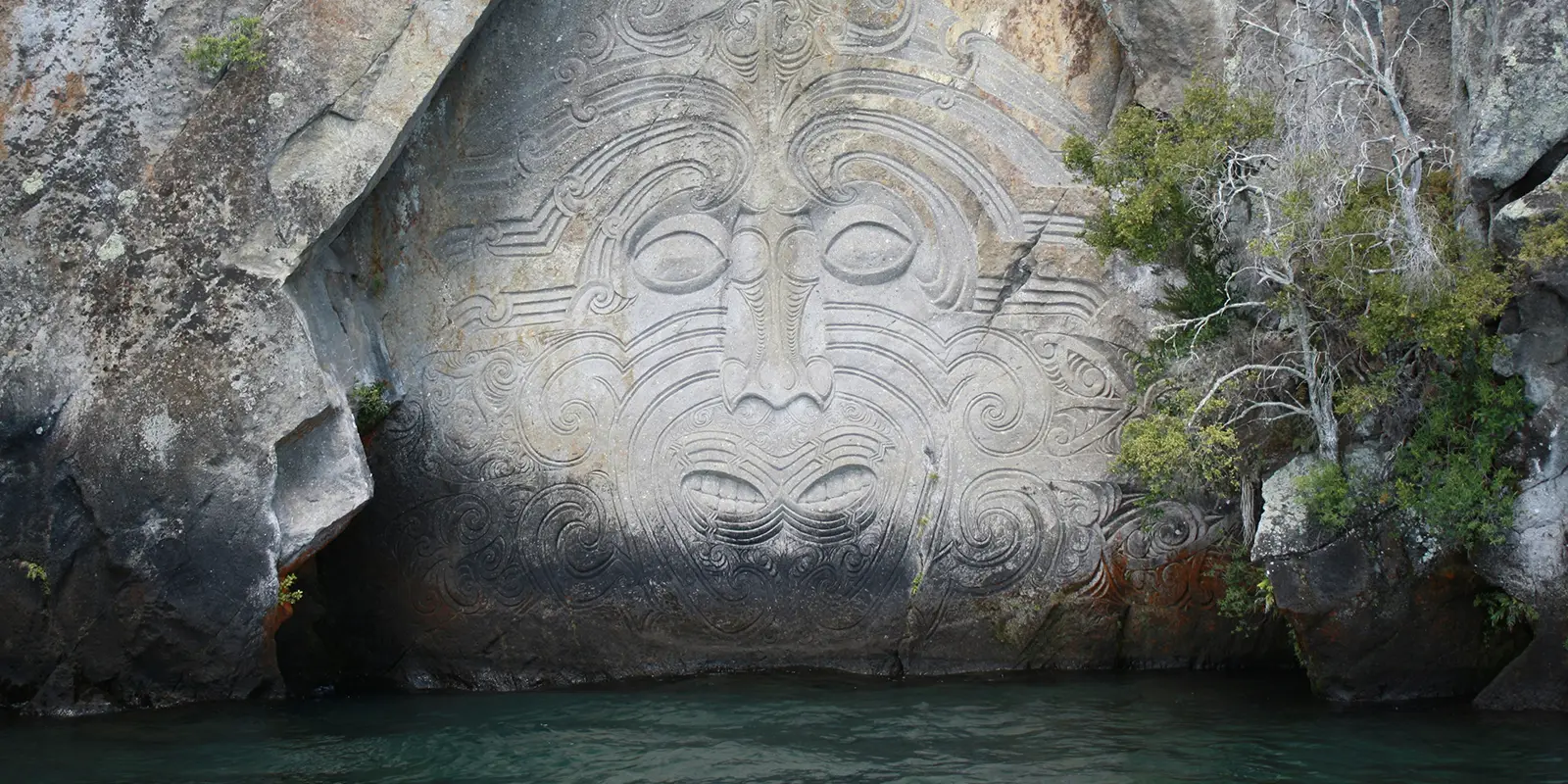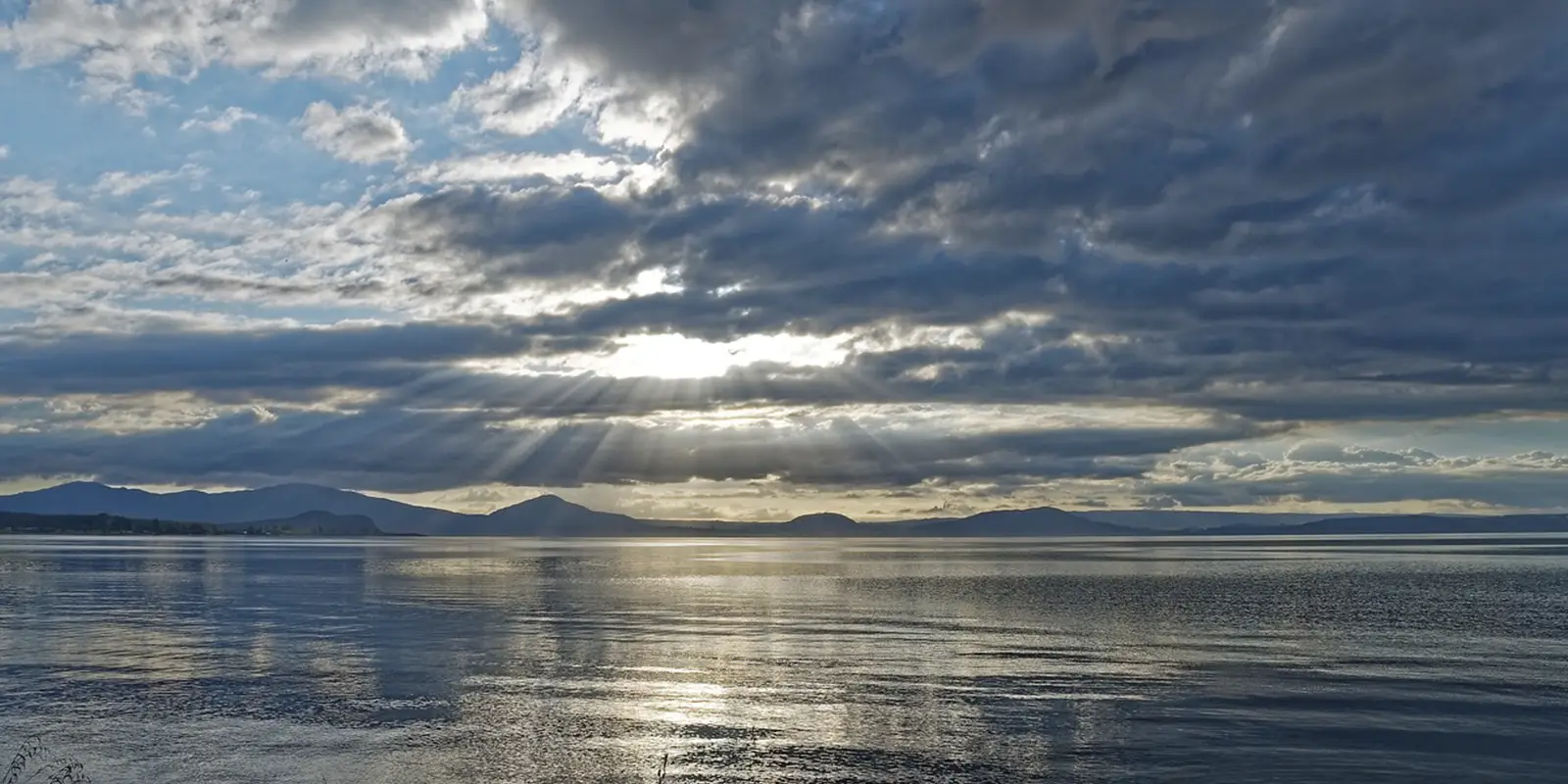Located in the heart of New Zealand’s North Island, Lake Taupo entices travelers with its remarkable geology and stunning vistas. Whether it’s unwinding in geothermal hot springs or embarking on mountain biking adventures amidst volcanic landscapes, Lake Taupo promises an outdoor paradise suited for all nature enthusiasts.
About Lake Taupo
The Lake Taupo region is an adventurer’s paradise, with a scenic boat tour being the ideal way to delve into the lake’s wonders. These tours provide a glimpse of the iconic Ngatoroirangi Mine Bay Maori Rock Carvings, highly prized artworks. For those preferring independent exploration, jet skis offer a thrilling option. Additionally, aerial excursions such as flight tours, helicopter tours, skydiving, or parasailing provide breathtaking perspectives of the lake and its surroundings.
The Lake Taupo area is surrounded by captivating natural attractions, with Huka Falls standing out as a favorite among visitors for its mesmerizing cascade of blue-green waters over rugged rock formations. A brief drive from Huka Falls leads to Craters of the Moon, an otherworldly geothermal park featuring steaming vents, bubbling mud pools, and vibrant mineral deposits. To unwind after exploration, tourists can indulge in the Wairakei Terraces & Thermal Spa, immersing themselves in naturally heated pools for a rejuvenating thermal bathing experience.
The volcanic landscapes surrounding the lake make for some excellent hiking and mountain biking opportunities. Tourists can explore the diverse network of trails at Tongariro National Park, including the world-famous Tongariro Alpine Crossing. The park also offers skiing and snowboarding in the winter at Whakapapa, the largest ski area in New Zealand. North of Tongariro National Park, the Tongariro River’s powerful rapids make for a thrilling white water rafting adventure.

Lake Taupo Stats & Facts
Lake Taupo has a fascinating geological history dating back thousands of years. Formed through a series of cataclysmic volcanic eruptions, the lake is the result of a colossal supervolcanic event known as the Oruanui eruption, which occurred approximately 25,600 years ago. This eruption ranks as one of the most powerful volcanic events in recorded history, shaping the landscape of the entire region. The explosion emptied vast magma chambers beneath the Earth’s surface, causing the collapse of the volcano’s summit to form a massive caldera. Over time, the caldera gradually filled with water from rainfall and surrounding rivers, giving rise to Lake Taupo.
Lake Taupo’s crystal-clear water is renowned for its stunning blue color, which is attributed to its low nutrient levels and sparse algae presence. Within its waters lies one island, Motutaiko Island, named in the Maori language like many other places in the area. The lake’s surroundings are steeped in Maori culture and history, boasting significant archaeological sites and cultural landmarks nearby. On the northern shores of the lake, the bustling tourist hub of Taupo offers accommodation, dining, and a plethora of photo opportunities.
Lake Taupo is the largest lake in New Zealand, encompassing an area of approximately 238 square miles (616 square kilometers). The lake’s shoreline stretches for approximately 120 miles (193 kilometers), dotted with picturesque bays and beaches. Despite being sizable, Lake Taupo’s maximum depth of around 610 feet (186 meters) doesn’t rank among the ten deepest lakes in New Zealand. The water level of Lake Taupo fluctuates slightly throughout the year due to rainfall, snowmelt, and hydroelectric dam operations, maintaining a relatively stable elevation. There is a major hydroelectric power station located along the lake’s outflow, the Waikato River.
Weather & Climate at Lake Taupo
The climate at Lake Taupo is characterized by mild temperatures, with warm summers and cool winters influenced by its central location on the North Island. Summer months (December to February) bring long days of sunshine and warmer temperatures, perfect for hiking, swimming, and water sports. Winter months (June to August) see cooler temperatures and occasional rainfall, creating ideal conditions for soaking in thermal hot pools or exploring nearby ski fields. Spring and autumn offer mild weather and fewer crowds, making them great seasons to visit for those seeking tranquility.







